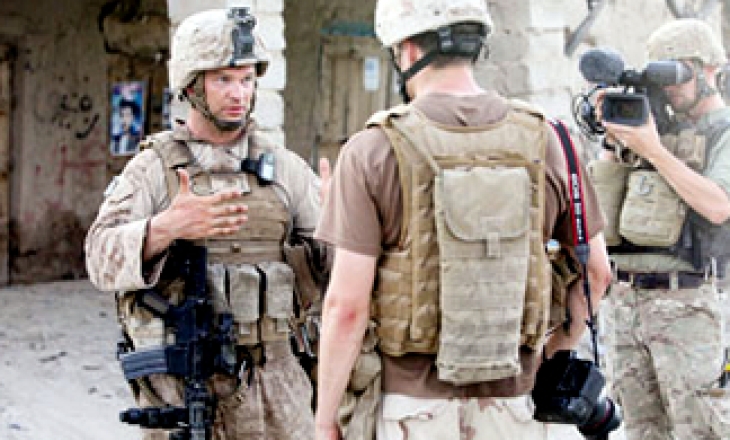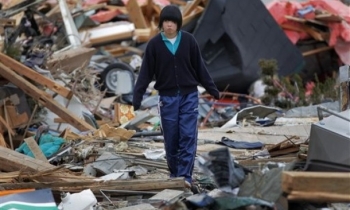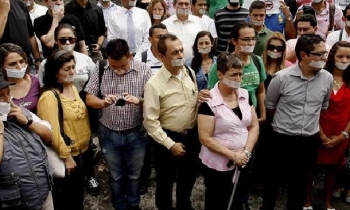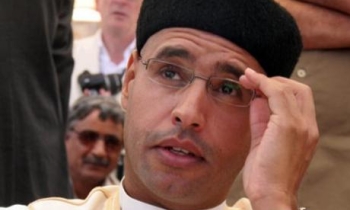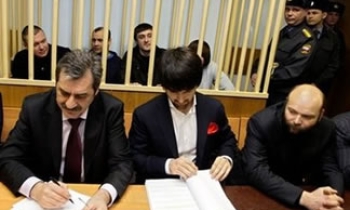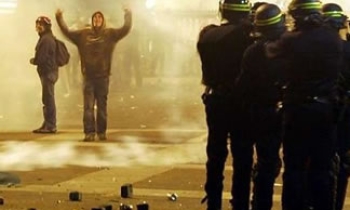Many embedded journalists are being screened by a controversial Washington-based public relations firm contracted by the Pentagon to determine whether their past coverage has portrayed the US military in a positive light, the Stars and Stripes newspaper has reported.
Stars and Stripes, a military newspaper partly funded by the Pentagon but editorially independent, said private contractors had been brought in by the US Defence Department to evaluate journalists.
US public affairs officials in Afghanistan acknowledged to the newspaper that any reporter seeking to embed with US forces is subject to a background profile by the Rendon Group, which gained notoriety in the run-up to the 2003 US invasion of Iraq for its work helping to create the Iraqi National Congress. That opposition group, reportedly funded by the CIA, furnished much of the false information about Iraq’s supposed weapons of mass destruction used by the Bush administration to justify the invasion.
Some details from the report: [Link]
Rendon examines individual reporters’ recent work and determines whether the coverage was “positive,” “negative” or “neutral” compared to mission objectives, according to Rendon officials. It conducts similar analysis of general reporting trends about the war for the military and has been contracted for such work since 2005, according to the company.
“We have not denied access to anyone because of what may or may not come out of their biography,” said Air Force Capt. Elizabeth Mathias, a public affairs officer with U.S. Forces Afghanistan in Kabul. “It’s so we know with whom we’re working.”
U.S. Army officials in Iraq engaged in a similar vetting practice two months ago, when they barred a Stars and Stripes reporter from embedding with a unit of the 1st Cavalry Division because the reporter “refused to highlight” good news that military commanders wanted to emphasize.
Professional groups representing journalists are decrying the Pentagon’s screening of reporters.
“That’s the government doing things to put out the message they want to hear and that’s not the way journalism is meant to work in this country,” said Amy Mitchell, deputy director for Pew Research Center’s Project for Excellence in Journalism.
“The whole concept of doing profiles on reporters who are going to embed with the military is alarming,” said Ron Martz, president of the Military Reporters and Editors association. “It speaks to this whole issue of trying to shape the message and that’s not something the military should be involved with,” he said.
Mathias said the Rendon reports are generated only after a reporter has been assigned to cover a unit and are done on an ad hoc basis, typically for lesser-known journalists and those new to covering the war in Afghanistan. The reports are useful for familiarizing commanders with topics the journalists could address and for facilitating coverage specific to a journalist’s interests, she said.
Mathias also contended that the Pentagon has begun shifting away from the positive-negative-neutral scale and is now evaluating news coverage more for its accuracy. “If it’s accurate, that’s a successful news story, whether good or bad,” she said.
The recent merger of U.S. and NATO public affairs outfits in Kabul has resulted in a one-stop shop for media information and embed requests. It also gives more public affairs officers access to the background reports and other services provided by The Rendon Group.
The backgrounders are part of a wide scope of work Rendon does for the Defense Department under its current $1.5 million “news analysis and media assessment” contract, according to military and company officials. The work includes statistical analysis of reporting trends inside and outside of the country and coverage of specific topics such as counternarcotics operations. It also analyzes how effectively the military is communicating its message.
In Washington on Thursday, Pentagon spokesman Bryan Whitman insisted that the Defence Department does not rate journalists based on the favorability of their coverage. "We are not doing that here," he told Agence France-Presse (AFP).
Rendon, according to the Associated Press (AP), disputed the newspaper's report, saying it does not rate work done by individual reporters or make recommendations on whether a particular journalist should be permitted to embed. The company said it does, however, grade how a subject is broadly covered by multiple media outlets.
The International Federation of Journalists (IFJ) condemned military vetting of journalists covering the Afghanistan conflict to see if they are sympathetic to the American cause. "This profiling of journalists further compromises the independence of media," said Aidan White, IFJ General Secretary. "It strips away any pretence that the army is interested in helping journalists to work freely. It suggests they are more interested in propaganda than honest reporting."
IFJ says that the recent merger of US and NATO public relations work in Kabul has created a single source for media information and handling all requests from journalists to be embedded. This has reinforced the influence of The Rendon Group. According to official sources there are at present 60 media outlets - excluding Afghan media - on the ground with US and NATO forces.
"Bringing democracy to Afghanistan is a massive challenge," said White. "But it will not be made easier by trying to manipulate media or encouraging journalists to show bias in favour of the military."

